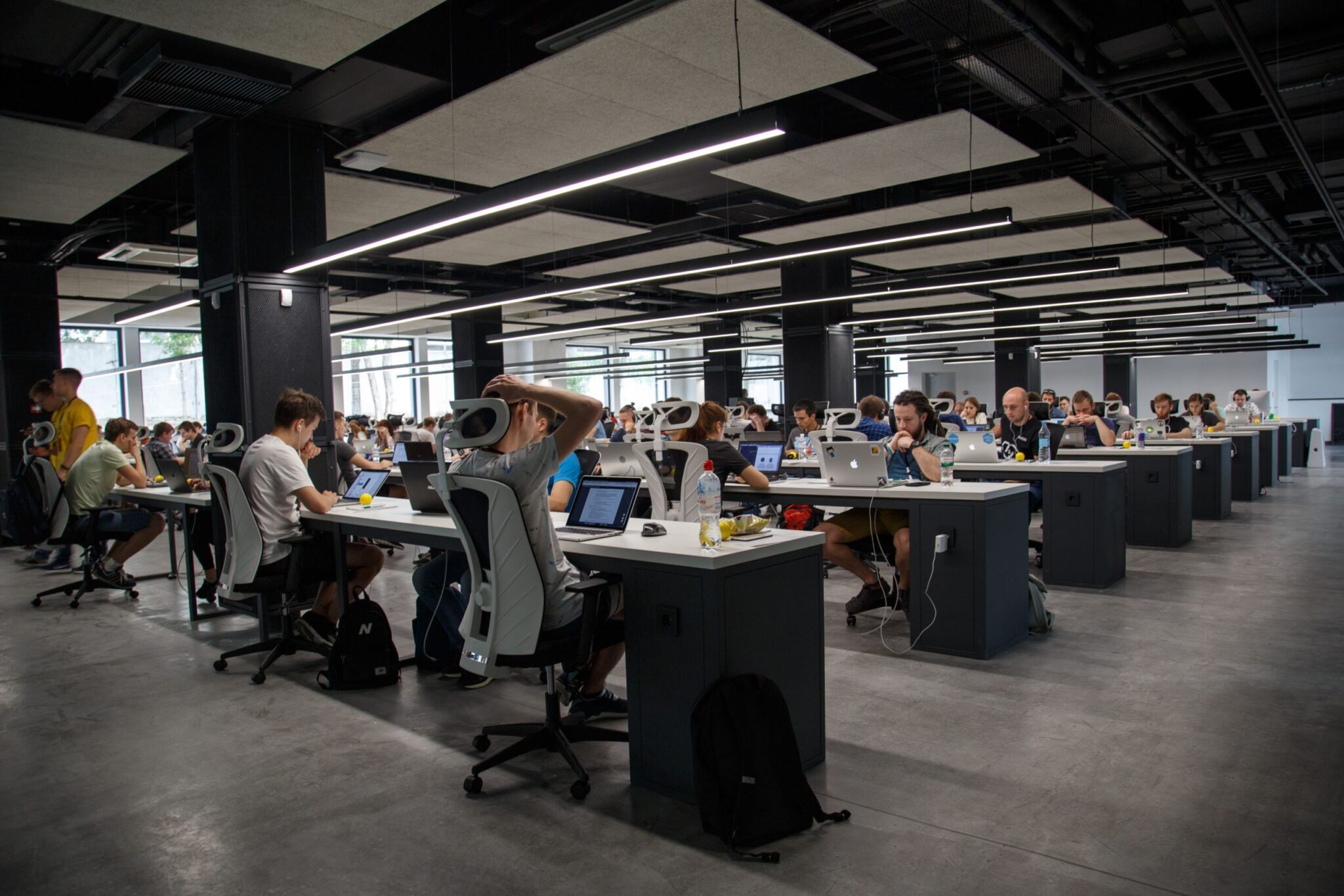To many people, open-plan offices are a great place to work. According to a study by Clutch.co, who provides data driven market research, 77% of employees working in open-plan offices are happy to share their office.
The study however also shows that 88% the participants of the study experienced challenges with distractions, lack of space and of places to talk privately on a daily basis. In addition, the study also showed that one of the biggest challenges of open-plan offices is the level of noise – this probably doesn’t surprise you. Actually, noise challenges in open-plan offices landed on a first place in the top 6 of challenges resulting from the study:
Top 6 challenges of working in open-plan offices:
- Distractions and noise (48%)
- Lack of places to talk privately (48%)
- Lack of space (39%)
- Lack of equipment and rooms (31%)
- Lack of the ability to personalize offices (31%)
- Security issues (23%)
Thoughts on the 6 challenges
As you may have spotted, “Distractions and noise” and “Lack of places to talk privately” are among the two biggest challenges for employees working in open-plan offices.
Many open-plan offices have meeting rooms for single employees to use for private conversations and avoid distracting others by talking in the office. These rooms are however often in use for their actual purpose, which is to have meetings. In addition, letting single employees use the meeting rooms just for the purpose of their private conversations are often an expensive solution to any company, as the office space is in those cases not used ideally compared to its purpose and price. Therefore, it is important that companies with open-plan offices and office communities reflect upon their costs, when meetings room are not used efficiently and according to purpose, and compare these with the costs of investing in, for example, noise-reducing inventory and phone booths for offices.
The future lies in open-plan offices, where synergies between the employees are easier to realize. Consequently, it is important for businesses to make the right investments and initiatives to accommodate those challenges.
The report by Clutch.co recommends that businesses take certain relevant actions to reduce noise in the office space. If the size of the office prevents the business from implementing those actions, such as installing a quiet room or a phone booth, due to lack of space, that business should consider finding a new open-plan office, which allows it to implement such relevant actions.
Behavior in open-plan offices
Introducing a set of behavioral rules might help secure a healthy working environment for every employee working at the open-plan office to work by.
Behavioral rules for open-plan offices are a great way of securing an organic reduction of distractions and noise. Businesses will however also experience challenges when setting behavioral rules in open-plan offices. Too many rules might end up limiting the free and creative development employees provide, and in worst cases they might result in reduced job satisfaction for some employees.
When setting the rules for the open-plan office, it is therefore a good idea to include all employees in order to find the best compromises and rules that everyone can work by.
The Danish company Indeklimaportalen has worked out a list of rules as an inspiration and example for setting behavioral rules:
- Permanent phones are only allowed to ring once with a low volume
- Redirect your phone if you are unable to answer it
- Mobile phones are to be on mute at all times
- Set some signals showing if you are able to talk or not
- Make it acceptable to comment on behavior at the office
- Go to the café/canteen or corridor if you wish to talk to a colleague. Remember to close the door
- Lower your voice and stand near by the person you are talking to
- Talking to each other also counts as “real work”
- Sit down as much as possible when talking to your colleagues
- Use the headset for your phone and lower your voice
- Use your headset when you want to listen to music and want to avoid being disturbed
- Work from home when you want to avoid any disturbances
- Don’t ask you colleagues questions that you are able to find the answers to yourself
- Limit any unnecessary walking through the office
- Eat in the canteen to avoid disturbing the office
Source: Indeklimaportalen.dk
Thoughts on behavior in open-plan offices
The majority of the above-mentioned behavioral rules are aspects that most businesses work on following. Here, it is important to understand that behavioral rules can give the employees a greater amount of freedom in their work. This freedom emanates from a less disturbing working environment, but also from providing employees with other spaces to work or letting them work from home when they wish for a whole day without any disturbances. The challenges emerge when the employee needs a quiet place to work a few times a day – in these cases, a phone booth from PhoneAlone is a perfect investment. The booth enables any business to meet the dynamic needs of focus from any person at an office.
By implementing a PhoneAlone phone booth at your office, you are able to revise your behavioral rules as alignment regarding what the phone booth is used for is important. A PhoneAlone phone booth is made for phone calls and quick online meetings during a busy workday. Therefore, having one employee occupying the booth for an entire day is not ideal, as it will strip other employees of the opportunity to use it. How to use the PhoneAlone phone booth in your office might vary from other offices. The important thing is that every employee accepts its terms of use and understands the difference between a phone booth and a meeting room.


